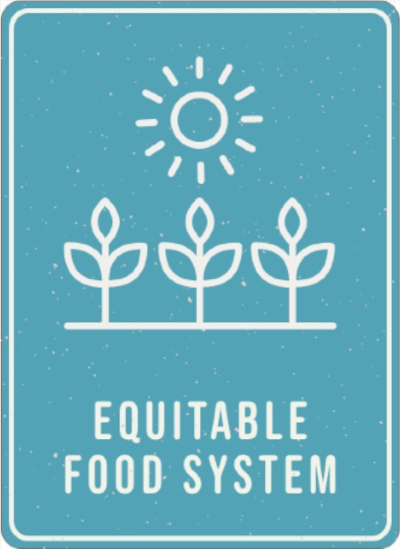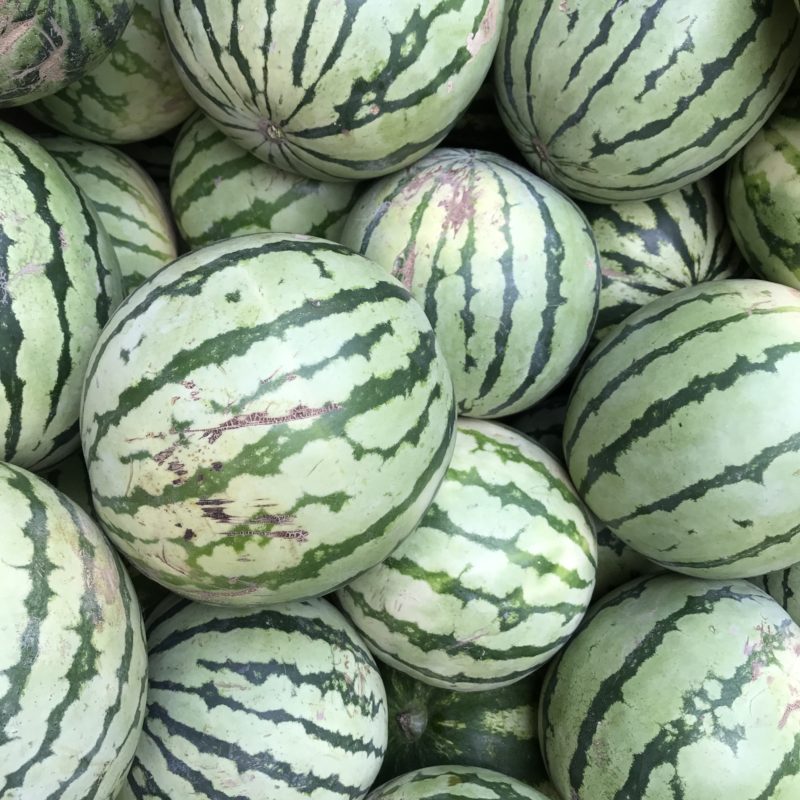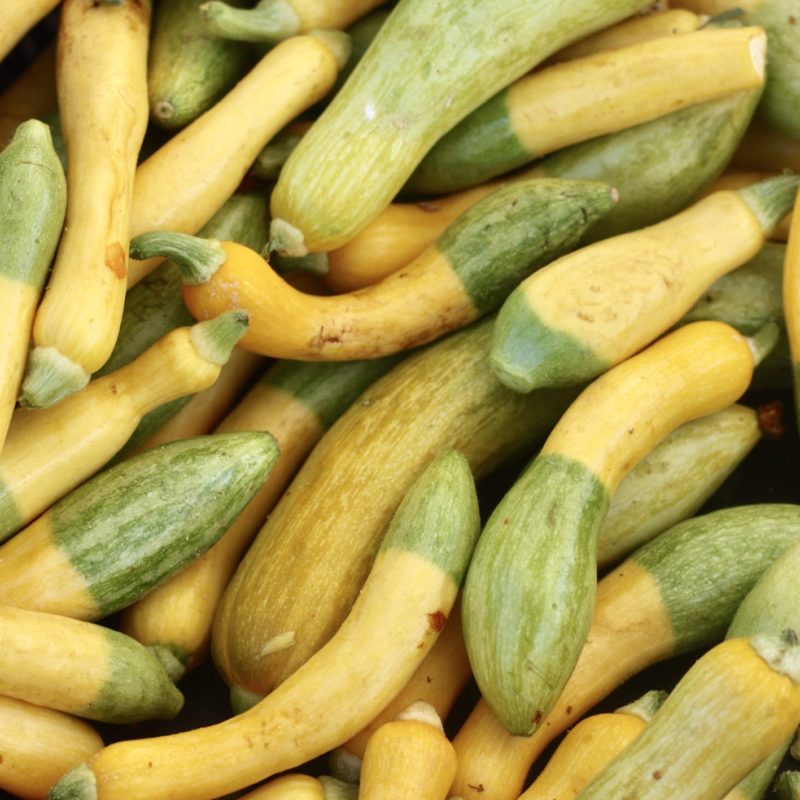Newsletter 778
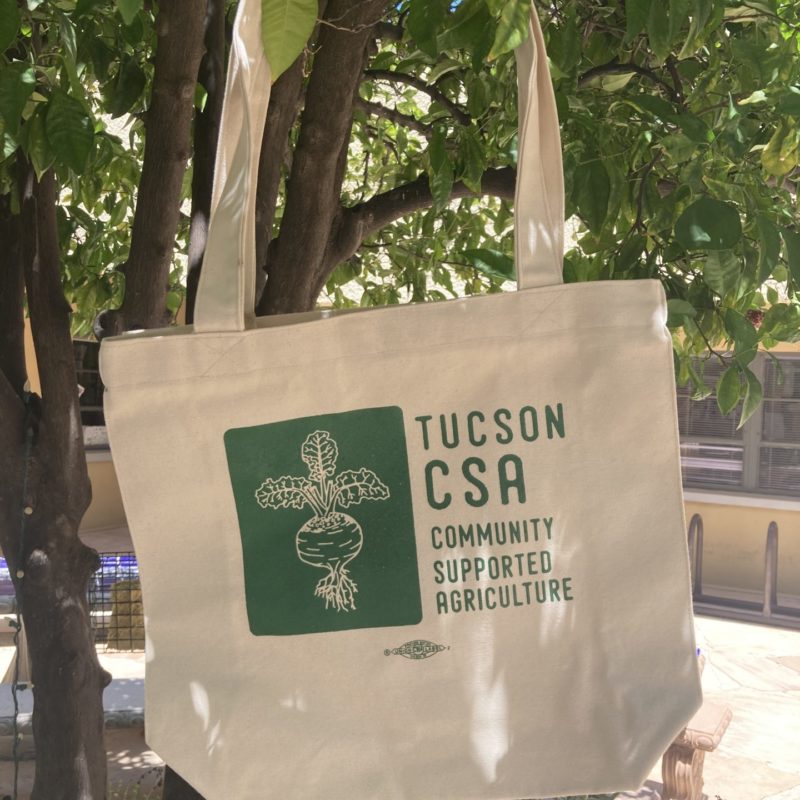
Farm Report
Monsoon Season on the Farm
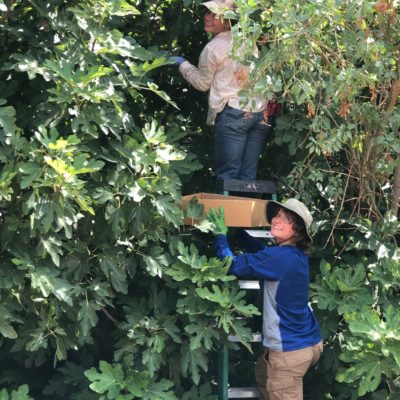
For Arizona farmers, summer monsoons are more than just reprieve from the intense heat – the health of their crops depends on the annual rainfall. After two years of drought, our farmers at Sleeping Frog Farms and Crooked Sky Farms are relieved by the wet summer we’ve had this year.
A good monsoon season means that the San Pedro River, along which Sleeping Frog Farms is situated, is rushing. Rainfall irrigates the fields naturally and allows the farmers to pump less water from the well, which is great for water conservation. Still, the monsoon brings its own challenges. “Lots of rain makes the weeds twice as crazy,” says Sleeping Frog Farms Farmer Laurel Goslin. All summer long they battle fast-growing weeds that can quickly take over an entire field. Heavy monsoon rains can also damage produce, like the delicate cherry tomatoes that split so easily.
Although it’s at a higher elevation than Tucson, working at Sleeping Frog Farms in the summer can be trying. Between the high humidity and large rattlesnake population (after all, “cascabel” means “rattle” in Spanish), working on the farm this time of the year takes its toll. Yet our farmers persevere, growing and harvesting warm weather crops like Armenian cucumbers, basil, eggplant, and Sungold tomatoes for our Wednesday CSA shares. Although they and other area farmers have had difficulty growing slicing tomatoes the last few summers (the plants tend to grow tall and lush but lose their flowers before fruiting), they’re beginning to get green fruit on this year’s plants and are hopeful that they’ll ripen well. Several varieties of peppers, such as jalapeños and lunchbox, are also beginning to come in, and CSA members can expect to see more peaches in their shares for the next few weeks.
Even though summer crops are in full swing, it’s already time for farmers to begin planning their summer and winter crops. Farmer Laurel will begin seeding cool-weather crops like kale, cabbage, and broccoli in mid-August so that she can get them into the ground by September, before the first frost of the season. Seedlings need to be watered three times each day and one missed watering could be the end of them. It might still be a while before CSA members start seeing greens in their shares, but there’s lots of fall produce to look forward to until then. Apples, beginning with sweet galas, will be ready for harvest in the next two or three weeks, accompanied by winter squash and other autumnal favorites.
CSA 101
Managing Wet Produce
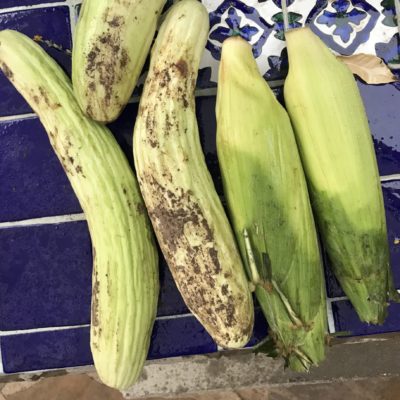
Plants need water, it’s true – but monsoon rains can cause damage, make “dry” produce wet, and coat our veggies with mud. Not to worry! If you notice that your CSA produce has been affected by the wet conditions, there’s plenty you can do to clean, dry, and store it properly. If your melon, corn, cucumber, etc. has a little bit of mold on the exterior, simply wash and dry the skin before storing it. If your pantry items (potatoes, onions, garlic, etc.) are damp, dry them off with a clean towel and allow them to fully dry on the countertop before storing them in your pantry. If your produce has a layer of mud on it, wash and dry it well before storing it. If your produce has slight damage (small dents, scratches, etc.) on the exterior, cut the damaged parts away before preparing and eating. Hopefully these steps will help to keep both you and your produce healthy during this record monsoon season!
Save the Date
How To Break into the Retail/Wholesale Market
To watch, go to: goodfoodfinderaz.com
Use the code TUCSONCSA at checkout for 20% off
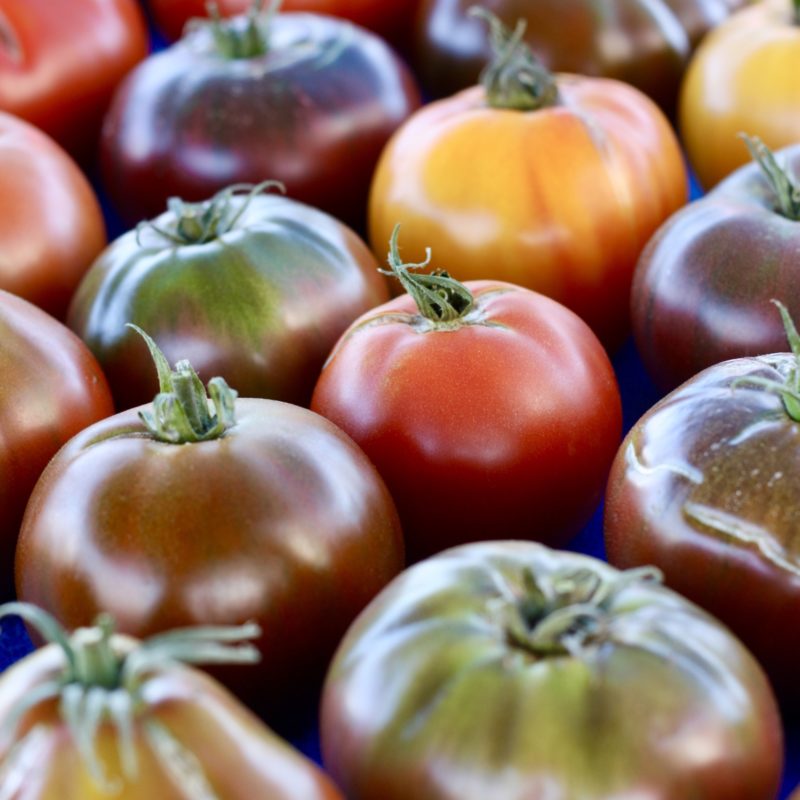
Produce Spotlight
Watermelon

The watermelon is a member of the Cucurbitaceae family which includes cucumbers, melons, pumpkins and squash. Like many of its relatives, it is a sprawling vine. By weight, the watermelon is the most consumed melon in the United States, followed by cantaloupe and honeydew.
Watermelon is thought to have originated in southern Africa, where it is found growing wild. Evidence of its cultivation in the Nile Valley was found from the second millennium BC. By the 10th century AD, watermelons were being cultivated in China, which is today the world’s single largest watermelon producer. By the 13th century, Moorish invaders had introduced the fruit to Europe; according to John Mariani’s Dictionary of American Food and Drink, “watermelon” made its first appearance in an English dictionary in 1615. It is believed that the watermelon was introduced to the New World by the Spaniards in the 15th century.
Watermelons can be round, oblong or spherical in shape. They are typically light to dark green with white mottling stripes, but some varieties differ a lot from the norm: some varieties such as “Moon And Stars” are dark purple with golden spots. Their flesh is commonly bright red but some varieties have brown, orange, yellow, pink or even white flesh. Their core contains large black seeds. Seedless hybrid varieties tend to be less flavorful.
Few fruits are as cooling as watermelons on a hot summer day. Usually only the flesh is eaten while the rind is discarded. The rind is the whitish green part of the watermelon, between the skin and the flesh. The rind is richest in minerals and can juiced with the flesh, or it can be pickled or candied.
Nutritional Benefits
The watermelon has a very high water content (92%.) It is rich in beta-carotene, folic acid, vitamin C, vitamin B5 and smaller amounts of B1, B2, B3 and B6. It is also a rich source of minerals such as calcium, magnesium, phosphorus, potassium, sodium and smaller amounts of copper, iron and zinc. Like the tomato, the watermelon is rich in lycopene, the red carotenoid pigment that gives it its red color. This important anti-oxidant is powerful in neutralizing harmful free radicals in our body.
Health Benefits
Watermelon is very cleansing, alkalinizing, diuretic and mineralizing. It is very effective in promoting elimination of toxic wastes. The alkalinizing effect maintains the acid-alkaline balance in the body, neutralizing the toxic condition of the body resulting from excessive intake of acid-forming foods.
We’re Reading
The Tiny Seed Eric CarleWe’re Listening To
So Hot Right Now: Why We Love the Chile Pepper Gastropod PodcastWe’re Watching
Child & Pepin Eggs YouTubeOn Social
Tabitha Brown (@iamtabithabrown) TikTokWhat’s Happening at Tucson CSA
CSA Tote Bags – FREE with donation to CS-Aid!
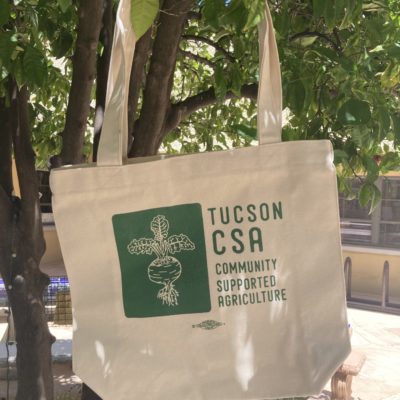
We launched our CS-Aid program in March of 2020 in direct response to the Covid-19 Pandemic with generous support from current members who started donating to make sure that others would not have to cancel their membership due to unforeseen financial hardship. We are happy to continue to offer support to help past, current, and future CSA members who would not otherwise be able to join.
We need your help to continue to support our community members and so we are giving away FREE a NEW Tucson CSA Tote Bag with your donation of $20 or more!
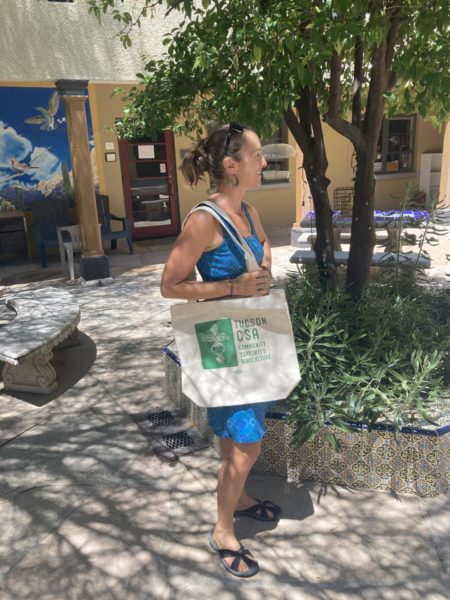
These large, sturdy bags are produced by a women’s cooperative at DouglaPrieta Works, in Douglas, Arizona and Agua Prieta, Sonora and screen-printed locally by The Gloo Factory. Come get one while supplies last and contribute to the CS-Aid Fund through The CSA Shop.
Our CS-Aid program stays true to our value of Food Equity by including all those who want to be a part of our community. Thank you for your support!
